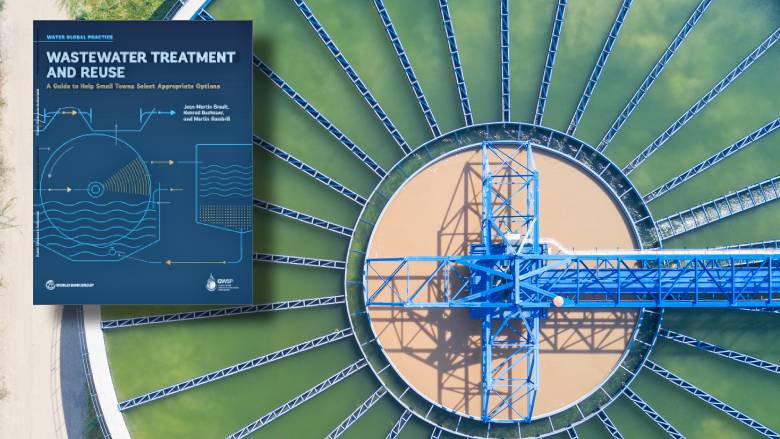Efficient Waste Water Treatment Equipments: Secret Methods and Advantages
Efficient Waste Water Treatment Equipments: Secret Methods and Advantages
Blog Article
Strategic Approaches to Improve Waste Water Therapy Effectiveness and Lessen Ecological Effect
In the world of waste water treatment, the pursuit for improved efficiency and lowered environmental effect is a continuous difficulty that requires tactical services. The assimilation of advanced therapy innovations, energy-efficient processes, resource recuperation methods, enhanced nutrient elimination strategies, and wise monitoring and control systems stands for a multifaceted framework for resolving these pushing problems.
Advanced Treatment Technologies
Cutting-edge membrane layer filtration systems have actually reinvented advanced wastewater therapy processes, dramatically enhancing the removal of impurities. This modern technology has actually proven to be very reliable in removing a broad range of pollutants, including pharmaceuticals, hefty metals, and natural substances, which are frequently testing to get rid of with conventional treatment techniques.
In addition, membrane purification systems supply many benefits over conventional therapy techniques. Additionally, these systems are highly flexible and can be conveniently integrated into existing therapy plants or made use of as standalone devices for decentralized applications.
Energy-Efficient Procedures
The combination of energy-efficient procedures in wastewater treatment systems is essential for enhancing resource application and decreasing operational prices. By carrying out energy-efficient innovations, therapy plants can significantly lower their carbon impact and general ecological influence. One key technique to improving power effectiveness in wastewater treatment is the usage of innovative oygenation systems, such as fine bubble diffusers or surface area aerators, which can boost oxygen transfer performance and reduce power intake. In addition, including energy recovery systems, like anaerobic digestion for biogas production or utilizing excess warm for thermal procedures, can help offset energy requirements and promote sustainability.
Additionally, enhancing procedure control and automation with using advanced sensing units and keeping an eye on systems can boost general power effectiveness by adjusting procedures in real-time based upon real need and conditions. Implementing energy audits and regularly checking energy efficiency indications are vital techniques to determine locations for enhancement and track energy-saving campaigns properly. Overall, the adoption of energy-efficient procedures in wastewater therapy not only benefits the environment yet also adds to long-term price financial savings and functional sustainability.
Resource Recuperation Techniques
With a concentrate on maximizing resource utilization and sustainability in wastewater treatment systems, the execution of resource recuperation techniques emerges as a critical element in boosting operational effectiveness. Source healing techniques in wastewater treatment involve the recognition and removal of important resources from the waste stream, therefore transforming what was when thought about waste into an important property. By implementing resource recovery methods such as nutrient elimination and healing, power generation from raw material, and the production of reusable water, wastewater treatment plants can minimize ecological effect while making best use of performance.

Improved Nutrient Removal Techniques
Implementing advanced nutrient elimination techniques is essential for enhancing the efficiency of wastewater treatment systems. Enhanced nutrient elimination plays an essential function in reducing the ecological influence of cured effluent discharged right into water bodies. One of the key methods used for boosted nutrient removal is the process of organic nutrient elimination (BNR), which entails the removal of nitrogen and phosphorus through biological procedures. This can be achieved through using specialized bacteria that can transform nitrogen substances into inert nitrogen gas with denitrification, and build up phosphorus within their cells through a my site process called improved biological phosphorus removal (EBPR)
In addition to BNR, advanced treatment techniques such as membrane bioreactors (MBRs) and built wetlands can additionally be utilized to improve nutrient removal effectiveness. By integrating these sophisticated nutrient elimination methods right into wastewater therapy districts, sectors and systems can properly reduce nutrient contamination and shield the setting.
Smart Surveillance and Control Equipment
Making use of sophisticated innovation, the integration of wise monitoring and control systems changes the Resources operational effectiveness of wastewater treatment facilities. These systems include advanced sensors and data analytics to constantly keep an eye on crucial parameters such as pH levels, turbidity, liquified oxygen, and circulation rates in real-time. By gathering and evaluating this information, drivers can get valuable understandings into the efficiency of the therapy processes, enabling positive changes to maximize treatment performance.
Smart surveillance and control systems also support remote tracking capacities, allowing drivers to accessibility real-time data and control functions from off-site locations. This remote accessibility improves operational adaptability and responsiveness, making it possible for quick interventions in case of system breakdowns or changes in influent quality. Furthermore, the anticipating maintenance capacities of these systems aid protect against devices failures and decrease downtime, eventually improving the overall integrity of wastewater treatment procedures (Waste Water Treatment).
Verdict
To conclude, critical strategies such as innovative treatment innovations, energy-efficient processes, resource recuperation methods, improved nutrient elimination methods, and clever tracking and control systems play a vital function in boosting wastewater therapy performance and minimizing ecological impact. By applying these methods, wastewater therapy plants can enhance their total efficiency, reduce power usage, recuperate valuable resources, and make certain compliance with environmental guidelines. These techniques are important for lasting and efficient wastewater monitoring techniques.

In conclusion, strategic methods such as sophisticated therapy modern technologies, energy-efficient procedures, source healing methods, enhanced nutrient removal methods, and wise monitoring and control systems play a vital duty in improving wastewater therapy effectiveness and decreasing environmental impact.
Report this page